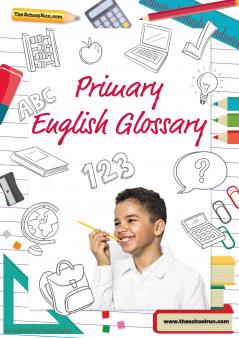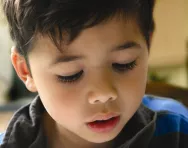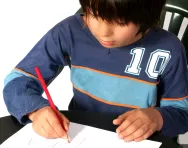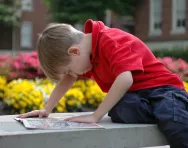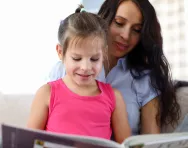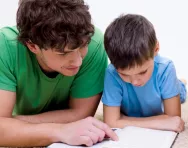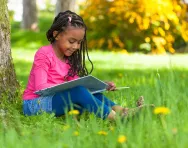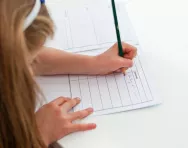Important update from TheSchoolRun
For the past 13 years, TheSchoolRun has been run by a small team of mums working from home, dedicated to providing quality educational resources to primary school parents. Unfortunately, rising supplier costs and falling revenue have made it impossible for us to continue operating, and we’ve had to make the difficult decision to close. The good news: We’ve arranged for another educational provider to take over many of our resources. These will be hosted on a new portal, where the content will be updated and expanded to support your child’s learning.
What this means for subscribers:
- Your subscription is still active, and for now, you can keep using the website as normal — just log in with your usual details to access all our articles and resources*.
- In a few months, all resources will move to the new portal. You’ll continue to have access there until your subscription ends. We’ll send you full details nearer the time.
- As a thank you for your support, we’ll also be sending you 16 primary school eBooks (worth £108.84) to download and keep.
A few changes to be aware of:
- The Learning Journey weekly email has ended, but your child’s plan will still be updated on your dashboard each Monday. Just log in to see the recommended worksheets.
- The 11+ weekly emails have now ended. We sent you all the remaining emails in the series at the end of March — please check your inbox (and spam folder) if you haven’t seen them. You can also follow the full programme here: 11+ Learning Journey.
If you have any questions, please contact us at enquiries@theschoolrun.com. Thank you for being part of our journey it’s been a privilege to support your family’s learning.
*If you need to reset your password, it will still work as usual. Please check your spam folder if the reset email doesn’t appear in your inbox.
Primary literacy glossary for parents
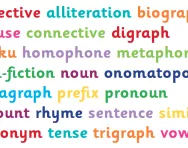
You'll find basic definitions of important primary-school literacy terms below. For a much more detailed, parent-friendly guide to how children are taught about each of these concepts in English, as well as examples, click on the link in the word.
TheSchoolRun also offers a free primary-school numeracy glossary and a free primary-school science glossary.
Active voice
A sentence is written in active voice when the subject of the sentence is performing the action (for example, "The cat chased the mouse.")
Adjective
An adjective is a word used to describe and give more information about a noun, which could be a person, place or object.
Adverb
An adverb is a word which modifies a verb, which means that it tells you how, when, where or why something is being done.
Alliteration
Often used in poetry, alliteration is the repetition of an initial letter or sound in closely connected words.
Antonym
Antonyms are words with opposite meanings (love and hate, for example). Words with similar meanings are synonyms.
Apostrophe
Apostrophes are punctuation marks used to show possession and to show contraction (also known as omission).
Article
Articles are words which tell us whether a noun is general (any noun) or specific. There are three articles: 'the' is a definite article and 'a' and 'an' are indefinite articles.
Argument text
Argument text is a piece of writing which expresses points of view 'for' or 'against' the subject.
Biography and autobiography
A biography is a non-fiction text written about someone else's life (usually someone famous). An autobiography is a text written about one's own life.
Blending sounds
Blending sounds means looking at a word and, rather than saying the separate sounds that make it up, linking the sounds together and saying the whole word in one go. Blending is an essential phonics skill which children are taught as part of learning to read.
Book report
A book report or review is your child’s written critique of a book. Book reports tend to focus on describing what the book is about, while reviews are more concerned with your child’s opinion of the book.
Brainstorming
Brainstorming is a process in which a question or problem is posed, then a group of people give ideas which are noted by a person who writes them down on paper or a board for the group to see.
Clause
Clauses are the building blocks of sentences, groups of words that contain a subject and a verb. Clauses can be main or subordinate.
Cohesive devices
'Cohesive devices' are the conjunctions, connectives and pronouns used to link the parts of a piece of writing. Using the same verb tense throughout a text also offers 'cohesion'.
Colon
A colon is a punctuation mark that can be used to introduce a list or to separate two independent but linked clauses.
Comma
A comma is a punctuation mark that separates items in a list and marks the divisions within sentences.
Comparative
The comparative form of an adjective or adverb is used to compare one person, thing, action or state to another. Examples of comparatives: sadder, lighter, more famous, worse, more angrily. The comparative is usually formed by adding the suffix -er.
Conjunction
A conjunction is a type of connective ('connective' is an umbrella term for any word that connects bits of text). Co-ordinating connectives include the words and, but and so; subordinating connectives include the words because, if and until.
Connective
A connective is a word that joins one part of a text to another. Connectives can be conjunctions, prepositions or adverbs.
Consonant and consonant cluster
The alphabet is made up of 26 letters, 5 of which are vowels (a, e, i, o, u) and the rest of which are consonants. A consonant is a sound that is made by blocking air from flowing out of the mouth with the teeth, tongue, lips or palate. Two consonants which appear next to each other are known as a consonant cluster.
Contracted words or contractions
Contracted words are short words made by putting two words together. Letters are missed out in the contraction and replaced by an apostrophe, for example I'm (I am) or it's (it is).
Creative writing
Narrative or creative writing involves writing stories with a structure, using knowlege of grammar and punctuation to present them correctly.
CVC / CCVC / CVCC words
A CVC word is a word that is made up of a consonant, vowel and consonant. CCVC words are made up of a consonant, a consonant, a vowel and a consonant. In CVCC words the sequence is: consonant, vowel, consonant, consonant.
Dash
A dash is a versatile punctuation mark that can be used within a sentence (instead of brackets or a colon) to show parenthesis.
Decoding
Decoding is the process of seeing written words on a page and being able to say them out loud.
Determiner
A determiner is a word that introduces a noun and identifies it in detail. Determiners can be articles (a, an, the), demonstratives (this, that), possessives (your, his), quantifiers (some, many), numbers (six, sixty).
Digraph
A digraph is two letters that make one sound. Digraphs can be made up of vowels or consonants.
Direct and indirect speech
Direct speech is a sentence in which the exact words spoken are reproduced in speech marks (quotation marks or inverted commas). Indirect speech or reported speech is when the general points of what someone has said are reported, without actually writing the speech out in full.
DUMTUMS
DUMTUMS are a way of reminding children how to present their work. The letters stand for: Date, Underline, Miss a line, Title, Underline, Miss a line, Start.
Ellipsis
An ellipsis is a punctuation mark, a series of three consecutive dots that can be used to show a pause for effect to increase tension, an unfinished thought, a trail off into silence or that the writer has deliberately missed out a word, sentence, or whole section from a text, without altering its original meaning.
Embedded clause
An embedded clause is a clause used in the middle of another clause. It is usually marked by commas.
Encoding
Encoding is the process of hearing a sound and being able to write a symbol to represent that sound.
Exception words
Exception words are words in which the English spelling code works in an unusual or uncommon way. Children learn to read and spell common exception words throughout their time in primary school, particularly in Reception, Y1 and Y2.
Exclamation mark
An exclamation mark is a punctuation mark which looks like a straight line with a dot underneath it. It is used to show that an exclamation, an interjection or a statement sentence has finished.
Exclamation sentence
An exclamation is forceful statement which expresses high levels of emotion or excitement.
Explanation text
An explanation text describes a process. These non-fiction texts are usually written in the present tense, with numbered points and diagrams or pictures to make the process clear.
Extended writing
Extended writing is when children are given a set amount of time to produce a piece of writing unaided. An extended writing session often marks the end of a unit of literacy teaching.
Fable
A fable is a story that features animals, plants or forces of nature that have been anthropomorphised (given human qualities) and ends with a ‘moral’.
Figurative language
Figurative language uses words and ideas to suggest meaning (as opposed to literal language, which communicates in a plain and obvious way). In primary school, forms of figurative language studied include metaphor, simile, personification, hyperbole and onomatopoeia.
Fronted adverbials
Fronted adverbials are words or phrases at the beginning of a sentence, used like adverbs to describe the action that follows.
Full stop
A full stop is a punctuation mark used to separate sentences.
Grapheme
A grapheme is a written symbol that represents a sound (a phoneme). This can be a single letter, or could be a sequence of letters (ai, sh, igh, tch, for example).
Guided reading
Guided reading is a regular, time-tabled session in which teachers work with a small number of children in the classroom to analyse a text in detail, making sure each child can read each word and discussing meaning of the text with them.
Haiku
A haiku is a form Japanese poetry that has three lines. There can be any number of words, but there must be 5 syllables in the first line, 7 syllables in the second line and 5 syllables in the third line. Haikus don't usually rhyme.
High-frequency words
High-frequency words are some of the most common words in the English language. A number of them don’t follow phonetic rules, so they must be learned individually by heart. Children start to learn to read and write high-frequency words in Reception, and are given more words to memorise in KS1 and KS2.
Homophone
Homophones are words that sound the same but have different meanings. Some homophones are pronounced the same way and spelled the same way but have different meanings; others are pronounced the same way but are spelled differently and have different meanings.
Imperative verbs
Imperative verbs (also known as "bossy verbs") tell someone to do something. They are used in orders / commands and in instruction texts.
Information text
An information text is a non-fiction text which gives information about a particular thing. Information texts are sometimes called non-chronological reports, because they are reporting information about something without mentioning the order of events.
Instruction text
An instruction text is a non-fiction text such as a recipe or manual. Instruction texts include lists of items and numbered points detailing how to carry out a certain activity.
Interactive whiteboard
Interactive whiteboards are the size of a usual class whiteboard, but are connected to a teacher's computer, so whatever the teacher is doing on the computer will appear on the interactive whiteboard.
Irregular verbs
While most verbs form their different tenses according to an established "formula", some verbs do not form their tenses in a regular way and are called irregular verbs.
Journalistic writing
Journalistic or newspaper writing is a non-fiction genre which children learn to analyse and write in Key Stage 2 English.
Kenning
A kenning uses a two-word phrase in the place of a one-word noun in poetry (for example, sea-farer instead of sailor).
Learning objective / WALT
A learning objective is what the teacher wants the children to have learnt or achieved by the end of the lesson. Learning objectives are sometimes referred to as WALT (stands for We Are Learning To).
Letter sound
A letter sound is literally the sound we make when we are reading a written letter of the alphabet.
Letter string
A letter string is a group of letters that appear in a word. For example, the letter string str is contained in each of these words: string, straight, strike, strain.
Look, Cover, Write, Check
Look, Cover, Write, Check is a strategy used to help children learn to spell. When learning a new word, children are asked to: look at it, cover it over with a piece of paper or their hand, write the spelling again next to the word and finally uncover the spelling to check if they have got it right.
Metaphor
A metaphor is a comparison which is not literally true. It suggests what something is like by comparing it with something else with similar characteristics (for example, my brother is a piglet).
Mini-whiteboards
Mini-whiteboards are A4-sized wipe-clean surfaces which come with a whiteboard pen. Children are usually provided with a mini-whiteboard each, and use it to write on in the classroom.
Modal verbs
A modal verb is a special type of verb which changes or affects other verbs in a sentence. Modal verbs are used to show the level of possibility, indicate ability, show obligation or give permission.
Modelled writing
Modelled writing is when a teacher writes a passage of text in front of the class. It differs from shared writing in that the teacher does not ask for the input of the class.
Multi-clause sentence
A multi-clause sentence is another term for a complex sentence.
Mystery text
A mystery story is one in which an unexplained event (often a crime) has occurred and the reader discovers how events unfolded by reading the text.
Myths and legends
A myth is a traditional, ancient story that is fictional. Myths were often written to explain natural phenomena and quite often involved gods and fantasy creatures. A legend is a story which takes place within human history. Legends are widely believed to be rooted in the truth, but will have evolved over time and taken on fictional elements.
Non-chronological report
A non-chronological report is a non-fiction report which is not written in time order. Explanation texts, recounts and instruction texts are non-chronological reports.
Non-fiction
Any text that is not a story is non-fiction. Non-fiction texts studied at primary school include instruction texts, recounts, information texts, explanation texts, persuasive texts, biography, journalistic writing and argument texts.
Noun
A noun is a naming word. It is a thing, a person, an animal or a place. Nouns can be common, proper, abstract or collective.
Object
The object of a sentence is the thing or person that is involved in an action, but does not carry it out ("The cat chased the mouse.").
Onomatopoeia
Onomatopoeia is a word that names a sound, but also sounds like that sound. For example: boom, honk, pop, crack, cuckoo, crack, splat, tweet, zoom, sizzle, whizz, buzz, hiss, rip.
Paragraph
A paragraph is a section of writing consisting of one or more sentences grouped together and discussing one main subject.
Parenthesis
Parenthesis is a word, phrase, or clause inserted into a sentence to add extra, subordinate or clarifying information. Brackets are also known as parentheses and usually used to show parenthesis.
Passive voice
A sentence is written in passive voice when the subject of the sentence has something done to it by someone or something. For example: "The mouse was being chased by the cat."
Past continuous (or progressive)
The past continuous is the verb tense we use to describe actions that continued for a period of time in the past (I was walking / I was singing).
Past perfect
The past perfect is the verb tense we use to describe actions that were completed by a particular time in the past.
Personification
Personification is a type of figurative language which gives an object human characteristics (emotions, sensations, speech, physical movements).
Persuasive text
Persuasive text is non-fiction text which aims to make the reader do something. Adverts, posters and travel brochure are all kinds of persuasive text.
Phoneme
A phoneme is the smallest unit of sound.
Phonics
Phonics is a method of teaching children to read by linking sounds (phonemes) and the symbols that represent them (graphemes, or letters). Phonics is the method used in primary schools in the UK today to teach children to read.
Phrase
A phrase is a small group of words that does not contain a verb.
Play script
A play script is a piece of writing written for the stage. It is likely to include a list of characters, may be divided into acts (which are then divided into scenes) and contain dialogue and stage directions.
Plural
A plural word indicates there is more than one noun.
Prefix
A prefix is a string of letters that are added to the beginning of a root word, changing its meaning.
Preposition
Prepositions are linking words in a sentence. We use prepositions to explain where things are in time or space.
Present continuous (or progressive)
The present continuous is the verb tense we use to describe actions that continue for a period of time (I am walking / I am singing).
Present perfect
The present perfect is the verb tense we use to describe actions that are completed by the present.
Pronoun
A pronoun is a word used to replace a noun. Examples of pronouns are: he, she, it, they. Pronouns can be personal and possessive.
Question
A question is a type of sentence that we ask or write to gain further information from a person or people responding.
Question mark
A question mark is a punctuation mark, or a symbol, that shows that a question has ended.
Reading comprehension
Reading comprehension means understanding what is being read and being able to engage with a text on many levels, understanding its layers of meaning.
Recount
A recount is a non-fiction piece of writing that gives details of an event that has happened. Diary entries, newspaper articles and letters are all forms of recounts,
Relative clause
A relative clause is a type of subordinate clause that adapts, describes or modifies a noun by using a relative pronoun (who, that or which).
Rhyme
Rhyme is the repetition of similar sounds in words, usually at the end of lines in poems and songs.
Root word
A root word is a basic word with no prefix or suffix added to it. By adding prefixes and suffixes to a root word we can change its meaning.
Scaffolding learning
'Scaffolding' learning means providing a framework on paper that will support a child in learning a particular skill.
Semi-colon
A semi-colon is a punctuation mark that is used to separate two independent (main) clauses that are closely related.
Sentence
A sentence is one word or a group of words that makes sense by itself (a grammatical unit). Sentences begin with a capital letter and end with a full stop, a question mark or an exclamation point. Sentences usually contain a subject (doing something) and a verb (what is being done).
Shared writing
Shared writing is a process teachers use o help children to understand how to write a particular kind of text. It involves a teacher producing some text on the board with input from the class.
Simile
A simile is a comparison phrase which finds similar characteristics in two objects and compares them, always by using the words 'like' or 'as'.
Simple, compound and complex sentences
A simple sentence has a subject and one verb. A compound sentence is formed when you join two main clauses with a connective. A complex sentence is formed when you join a main clause and a subordinate clause with a connective.
Singular
When a noun is singular, it means there is only one person, place or object.
Speech marks
Inverted commas (also known as speech marks and quotation marks) are punctuation marks that show us where direct speech starts and ends.
Spider diagram
A spider diagram is a planning tool used to help children make notes on a particular subject.
Split digraph
A digraph is two vowels which together make one sound (as in the words tail, boat, found or read). When a digraph is split by a consonant it becomes a split digraph, sometimes known as 'magic e'.
Standard English
Standard English is the "correct" form of English, taught in schools and used in formal written communication.
Statement
A statement is the most common type of sentence. Statements are sentences that express a fact, idea or opinion.
Story map / Story mountain / Story flowchart
Story maps, mountains and flowcharts are diagrams used in the classroom to help children analyse the plot and the structure of a text.
Story setting
A story setting is the location in which a story takes place. The setting could anywhere, from a park to a home to an alien planet.
Subject
The subject of a sentence is the thing or person who is carrying out the action described by the verb ("The cat chased the mouse.").
Subjunctive
The subjunctive is a verb form used to express things that could or should happen, for example: If I were to go... / I demand that he answer!
Subordinate clause
A subordinate clause needs to be attached to a main clause because it cannot make sense on its own, although it contains a subject and a verb.
Success criteria / WILF
A success criteria is a list of features that a teacher wants the children to include in their work during the course of a lesson. It is sometimes known as the WILF (What I'm Looking For).
Suffix
A suffix is a string of letters that go at the end of a word, changing or adding to its meaning. Suffixes can show if a word is a noun, an adjective, an adverb or a verb.
Superlative
The superlative form of an adjective or adverb is used to compare one person, thing, action or state to all the others in its class. Examples of superlatives: saddest, lightest, most famous, worst, most angrily. The superlative is usually formed by adding the suffix -est.
Syllable
A syllable is a single, unbroken sound of a spoken (or written) word. Syllables are sometimes called the ‘beats’ of a word.
Synonym
Synonyms are words with the same or similar meanings.
Talk partner
Talk partners are pairs of children who discuss topics in the classroom. The use of talk partners is a common technique in the primary-school classroom.
Text-marking
Text-marking is highlighting, circling, underlining or labelling the features of a text. The purpose of text-marking is to make children aware of how different texts are set out and which features are used.
Time connectives
Time connectives are words or phrases which tell the reader when something is happening. They can also be called temporal connectives.
Traditional tale
A traditional tale is a fairy story or fairy tale, a story that has been told and re-told for many years and almost everyone knows. Examples of traditional tales are Cinderella, Goldilocks and the Three Bears and Little Red Riding Hood.
Trigraph
A trigraph is a single sound that is represented by three letters, for example tch, igh in fight or ear in bear.
Verbal reasoning
Verbal reasoning is a form of problem-solving based around words and language. Verbal reasoning tasks include solving word problems, following written instructions to come up with a solution, spotting letter sequences and cracking letter- and number-based codes.
Verbs and powerful verbs
A verb expresses a physical action, a mental action or a state of being. Powerful verbs are descriptive, rich words.
Verb tense
Verb tenses tell us the time when an action took place, in the past, the present or the future.
Vowel
The alphabet is made up of 26 letters, 5 of which are vowels (a, e, i, o, u) and the rest of which are consonants. A vowel is a sound that is made by allowing breath to flow out of the mouth, without closing any part of the mouth or throat.
Word bank
Word banks are lists of words to support children with their writing. These will vary according to the age of the child and the task given.
Word family
Word families are groups of words that have a common feature, pattern or meaning. They usually share a root word.
Writing frame
A writing frame is a blank diagram used to show children how to set out their writing and to remind them to include certain features.
Have we missed any literacy terms that you'd like to see explained? Email requests for new glossary entries to us at enquiries@theschoolrun.com
You'll find maths and numeracy terms and vocabulary explained in our Primary numeracy glossary for parents.
Printable version of the Primary English Glossary
Buy a downloadable and printable version of the complete Primary English Glossary (112 terms explained over 257 pages) for £4.99 in TheSchoolRun Bookshop.
